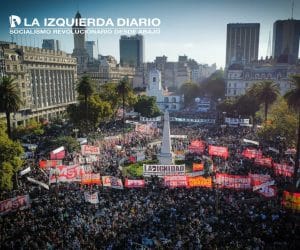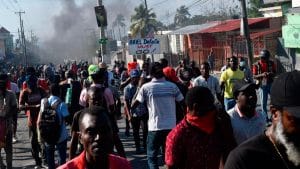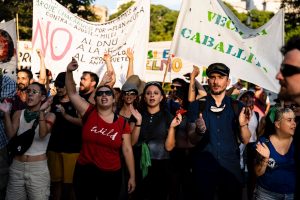The founder of Shining Path died at 6:40 a.m. on Saturday, September 11, in his cell at the Callao Naval Base. He was serving a life sentence. Abimael Guzmán had been arrested almost exactly 29 years earlier, on September 12, 1992, in the Surquillo District of Lima, alongside his partner and fellow party leader, Elena Iparraguirre. According to prison authorities, Guzmán’s health had been deteriorating since July.
Abimael Guzmán Reinoso was born on December 3, 1934, in the town of Mollendo, in the Arequipa region of Peru. He grew up in Lima and Arequipa. It was in the latter city that he completed a degree in philosophy and law at the National University of San Augustine. In 1962 he began teaching philosophy at the San Cristobál of Huamanga University in Ayacucho. The university’s staff included many teachers who supported leftist ideas, especially of a Stalinist or Maoist orientation. It was here that Guzmán aligned with Maoist sectors that had led the first major split from the Peruvian Communist Party (PCP) in 1964. This gave birth to the pro-Soviet Peruvian Communist Party, led by Jorge del Prado, and the pro-Chinese Peruvian Communist Party–Red Flag, led by Saturnino Paredes. It was from this latter faction that the Communist Party of Peru–Shining Path, founded and led by Guzmán, emerged.
Shining Path’s Political Strategy
Like many left-wing organizations in Peru in the 1960s and 1970s, Shining Path adopted Maoism and looked to the Chinese Revolution of 1949 as a model. This was framed within a dogmatic, sectarian, and messianic vision of political work that is completely alien to Marxist theory and practice. Shining Path never actually proposed to put an end to capitalism and advance toward a workers’ government based on the self-organization of workers and the oppressed — as has always been the goal of revolutionary Marxism.
Despite its militant rhetoric, Shining Path represented nothing more than armed reformism. Its actions took place within a political strategy of revolution by stages, as developed by Stalin. According to this theory, societies like Peru first needed to carry out a bourgeois-democratic revolution. The possibility of socialist revolution was left to an indeterminate future.
Shining Path’s theorists posited that Peruvian society was semifeudal and semicolonial. They therefore argued that the revolution to be carried out in Peru would be democratic and popular, sustained by four classes: the peasants, the intellectuals, the national bourgeoisie, and the proletariat. Mechanically following the Chinese experience, Shining Path assumed that revolution would begin in the countryside and end in the cities via a protracted people’s war. This would be led by a highly centralized and militarized party under what they called “wise leadership,” or “Gonzalo Thought.” In an extreme expression of messianic obscurantism, they considered Guzmán — referred to as President Gonzalo — to be “infallible.” According to their theory, once the revolution had been completed, their party would lead the construction of a new state using vertical and militarized methods, which would deny any active role to workers, poor people, and indigenous communities, or to workers’ democracy.
The Failure of Guzmán’s Strategy
Shining Path began its armed struggle in 1980 in the town of Chuschi, and they carried on until 1992. According to official estimates, up to 70,000 people were killed during the war — roughly half by state forces and half by the guerilla. Shining Path’s militaristic logic led them to carry out terrorist actions against working-class and poor people, including massacres in villages and bombings in cities. These were used, in turn, by capitalist governments and their repressive forces to justify brutal repression against workers and poor people, and also to discredit Marxist and communist ideas.
When Guzmán was arrested in 1992, the first thing he did was make a pact with the right-wing government of Alberto Fujimori. Guzmán and what was left of Shining Path’s central committee ended up campaigning in favor of the fraudulent constituent assembly imposed by Fujimori and his intelligence chief, Vladimiro Montesinos. This assembly approved the neoliberal constitution of 1993, which has allowed imperialism and the national bourgeoisie to plunder the country and attack workers’ rights.
Shining Path’s stagist, militarist strategy was completely alien to the working class and its methods of struggle. The group’s messianic view of politics was diametrically opposed to the revolutionary Marxism that led the Russian Revolution of 1917. Today, Shining Path no longer exists as a party. Most of Guzmán’s remaining followers have created the Movement for Amnesty and Fundamental Rights (MOVADEF) and the Front for the Unity and Defense of the Peruvian People (FUDEP). These organizations have abandoned any perspective of social transformation, and instead limit themselves to calls for a general amnesty and national reconciliation. They demand liberty not only for their leaders but also for right-wing prisoners, including Fujimori, Montesinos, and military and paramilitary figures who share responsibility for the almost 70,000 deaths during the internal conflict of the 1980s.
Today, the main aspiration of Guzmán’s followers is to assimilate into bourgeois democracy, in order to secure the release of their leaders, whom they consider indispensable. That is the central policy they carry out in the social sectors where they still have a presence. At the same time, there is also a faction of Shining Path called Proseguir, which in the 1990s questioned the peace agreement signed between Guzmán and Fujimori. They are said to have some presence in the jungle, but in practice they have become an armed wing of narco-trafficking gangs operating in the area.
The ghost of Shining Path has been very useful to right-wing governments and politicians. It helps them justify repression and criminalize social movements. They use accusations of “terrorism” to undermine any leftist alternative — especially those that seriously question the current economic and political system, which is based on exploitation and oppression.
To advance in the construction of a revolutionary left in Peru, we consider it necessary to highlight the profound limits of Shining Path’s strategy. The problem with “Gonzalo Thought” was not that it was radical or militant. Guzmán sought to confront the capitalist state while rejecting the central role of the working class and its methods of struggle, including mass protests, general strikes, and insurrections. Instead, he assigned the central role to a small military elite. As a result, Shining Path never aimed to build socialism, but rather a “new democracy” based on class collaboration with sectors of the bourgeoisie. While Guzmán is remembered for his advocacy of extreme violence — including violence against workers and peasants — his political program was ultimately not very radical at all.
A balance sheet of this experience is necessary to recover the traditions of revolutionary Marxism, which is based on the contributions of Marx, Engels, Lenin, and Trotsky, as well as of Rosa Luxemburg, Antonio Gramsci, and José Carlos Mariátegui. In reality, communism has nothing to do with the caricatures created by Stalinism, Maoism, or Shining Path. For Marx, communism means fighting for a new society “of free individuals, carrying on their work with the means of production in common, in which the labour power of all the different individuals is consciously applied as the combined labour power of the community.”
From this point of view, communism is not a state that can be coercively established by an authoritarian and militarized bureaucracy. In fact, communism means the disappearance of any kind of state, along with the disappearance of social classes. The construction of socialism can be the product only of conscious action by the masses themselves. The only way to advance toward communism is by developing the broadest workers’ democracy with organs of self-organization, such as the soviets of the Russian Revolution. This will lead to the extinction of the state and thus of all forms of human exploitation.
First published in Spanish on La Izquierda Diario Peru on September 12
Translated and adapted by Left Voice










